ADDRESS AT THE INAUGURATION OF THE SOUTH EAST ASIA GLAUCOMA INTEREST GROUP CONFERENCE
01-12-2006 : Chennai
Light to See: A Beautiful Mission
I am delighted to participate in the inauguration of the South East Asia Glaucoma Interest Group Conference organized by the Sankara Nethralaya Medical Research Foundation. My greetings to Dr. S.S. Badrinath, ophthalmologists, optometrists, medical social workers, medical technologists, delegates from South East Asian countries and distinguished guests participating in this Conference. I would like to talk to you on the topic ?Light to See: A Beautiful Mission?.
Present Scenario
Glaucoma is a silent disease of the eye, and the most important clinical sign is rise of intra ocular pressure. It is estimated that over 65 million people are affected by glaucoma worldwide. Because symptoms appear very late, only half of the affected individuals are aware of the disease. There are two adult forms of glaucoma- the open angle glaucoma and narrow angle glaucoma. Studies from India, Singapore and China have suggested that Asians suffer more from the narrow angle glaucoma compared to other populations who suffer from open angle glaucoma. Glaucoma has been identified as a priority ocular disease requiring urgent measures of intervention to decrease the burden of blindness in the Right to Sight by Vision 2020 initiative. India has over 10 million persons suffering from various forms of glaucoma both congenital and developmental. Indian scientists from Hyderabad and Madurai have identified specific genes such as Opti-nuron and CYP1B1 as the main cause of occurrence of glaucoma at birth or early in life. This research may lead to genetically designed drugs.
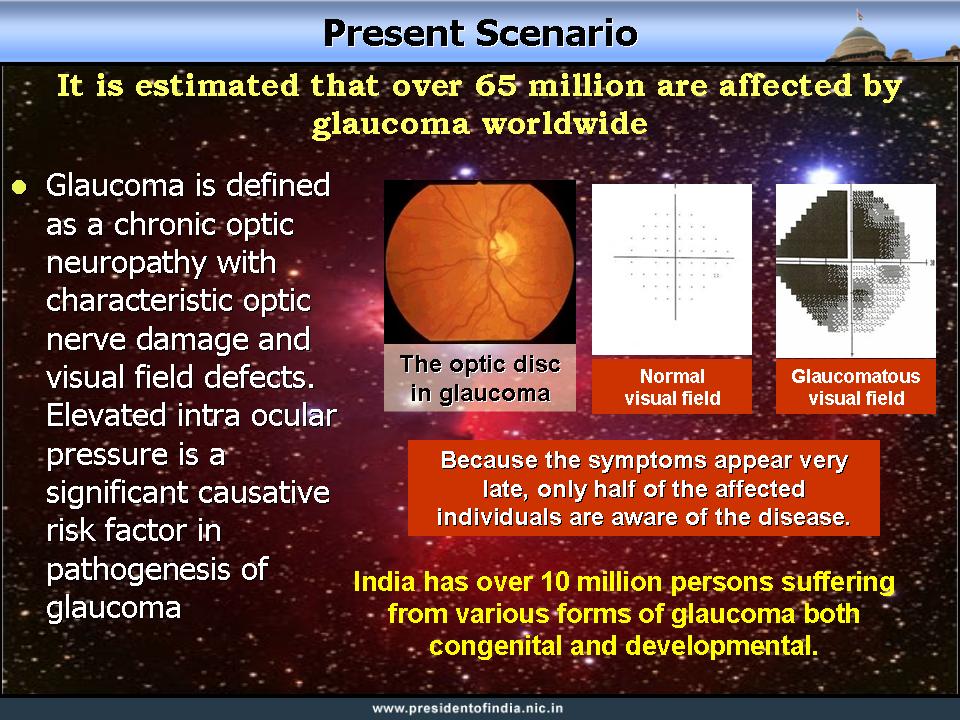

Diagnosis of Glaucoma
The treatment of glaucoma begins with early diagnosis. While traditional means of diagnosing and monitoring the treatment effect was measuring intra ocular pressure, glaucoma researchers have realized that early defect can be demonstrated by plotting the field of vision and through primary damage, which occurs in retinal neural tissue around the optic nerve head. A variety of devices are now available to accurately and reproducibly measure the field and the retinal nerve fiber changes in glaucoma. It is essential to equip eye care centres with these measurement devices particularly mobile clinics so that they can use it for screening people in rural areas.
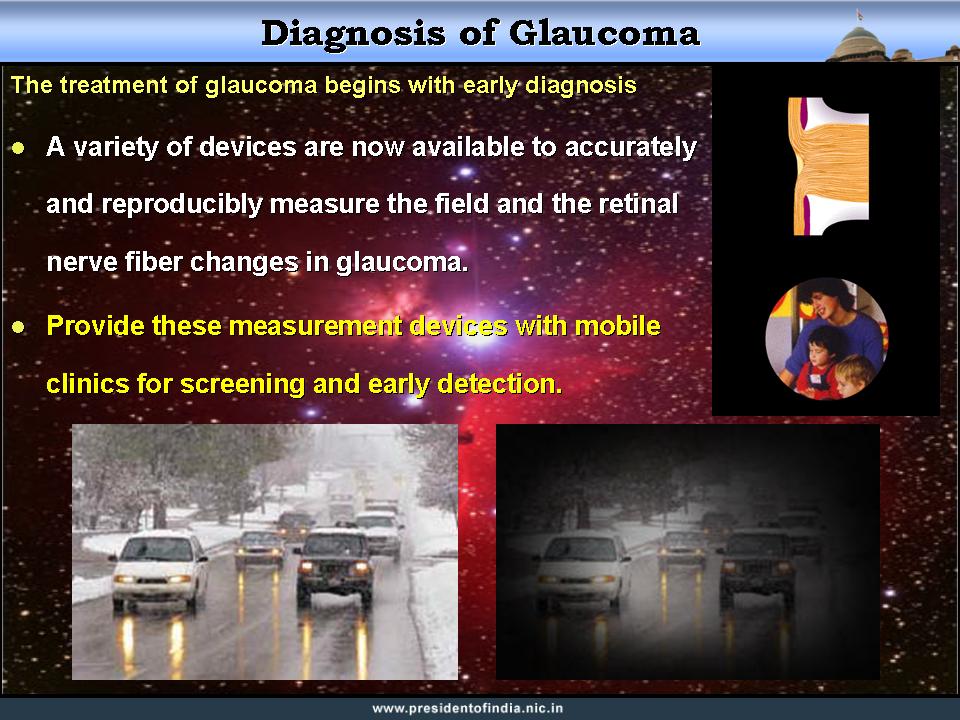

Treatment Methodologies
Primary open angle glaucoma is mostly treated by medications. The primary narrow angle glaucoma is treated with laser iridotomy. Advanced stages of both open and close angle glaucoma are treated by surgery. During the last few years there has been marked change in glaucoma therapy due to the availability of superior intra ocular pressure lowering agents that can be applied only once or twice a day so that patients are better compliant. However, I understand the cost of the drops is quite high. Specialist assembled here should work out strategies in partnership with pharma companies to bring down the cost of the drops for glaucoma medication.
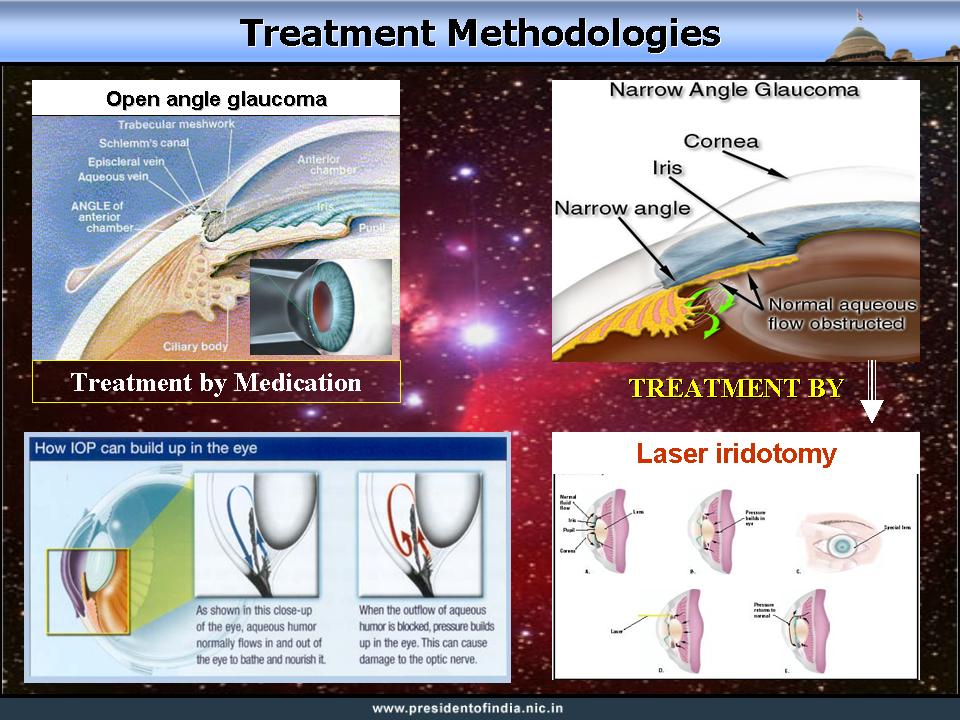

Challenges
The challenge in glaucoma management is proper diagnosis at the appropriate time. Since narrow angle glaucoma is more prevalent in the Asian population, a simple test like gonioscopy that estimates the configuration of the anterior chamber angle will go a long way in detecting this form of glaucoma early. This is important since a simple and cost effective laser treatment such as laser iridotomy can cure the glaucoma. My doctor friends say that doctors may sometimes want to monitor the intra-ocular pressure on an hourly basis, and doing it the conventional way is cumbersome. Would a device or probe be possible which could be inserted? Here is a challenge that should attract biomedical engineers and would be of great use for specialists. I firmly believe that learning gonioscopy must be made part of the ophthalmology curriculum for all eye specialists irrespective of their super specialization.
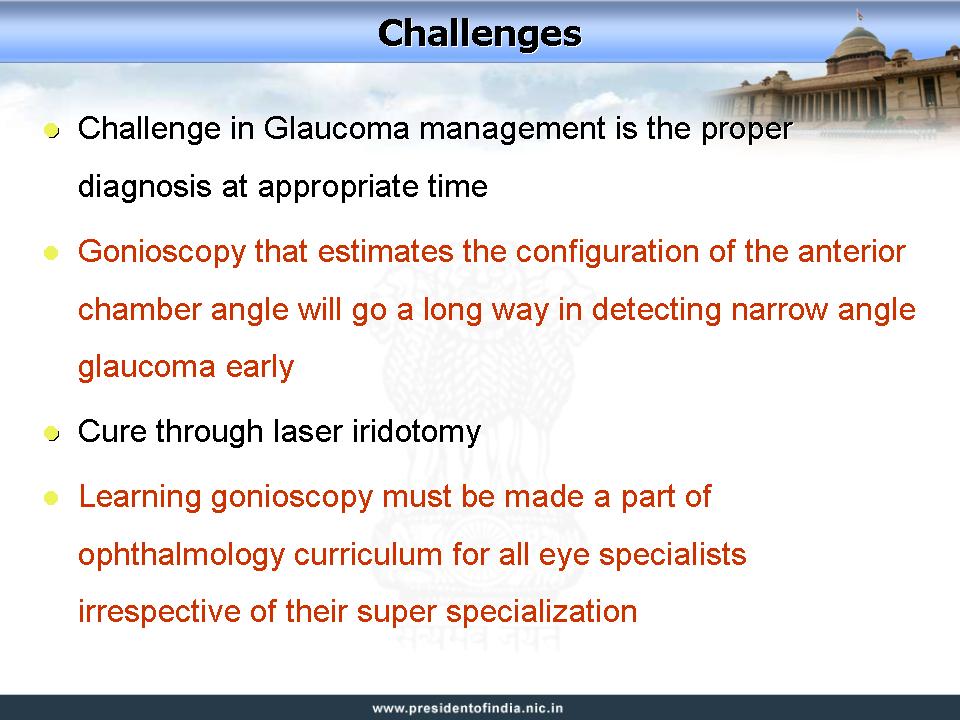

Future Direction
Glaucoma causes retinal neuronal dysfunction. Future glaucoma therapy should be directed to prevent, delay or reverse decay of the retinal ganglion cells and axons. Functional genomics and proteomics are likely to play a pivotal role in early detection of glaucoma. The recent identification and characterization of progenitors with stem cell properties has opened new avenues that may be useful for treating functional impairments caused by the death of specific cell population due to glaucoma. Stem cells may help restore vision in patients who has glaucoma, by repopulating or rescuing damaged cells. Stem cells can also be used for terminal stages of glaucoma. A few of our ophthalmologists are already working in stem cell therapy. Gene therapy approach is applicable to either lower the intra ocular pressure or protecting retinal ganglion cells. This approach could reprogram the target cells by transferring genetic material into them so that they lower intra ocular pressure physiologically. Another promising therapy is use of nano technology for targeted delivery of small-molecule therapeutic agents to the back of the eye.
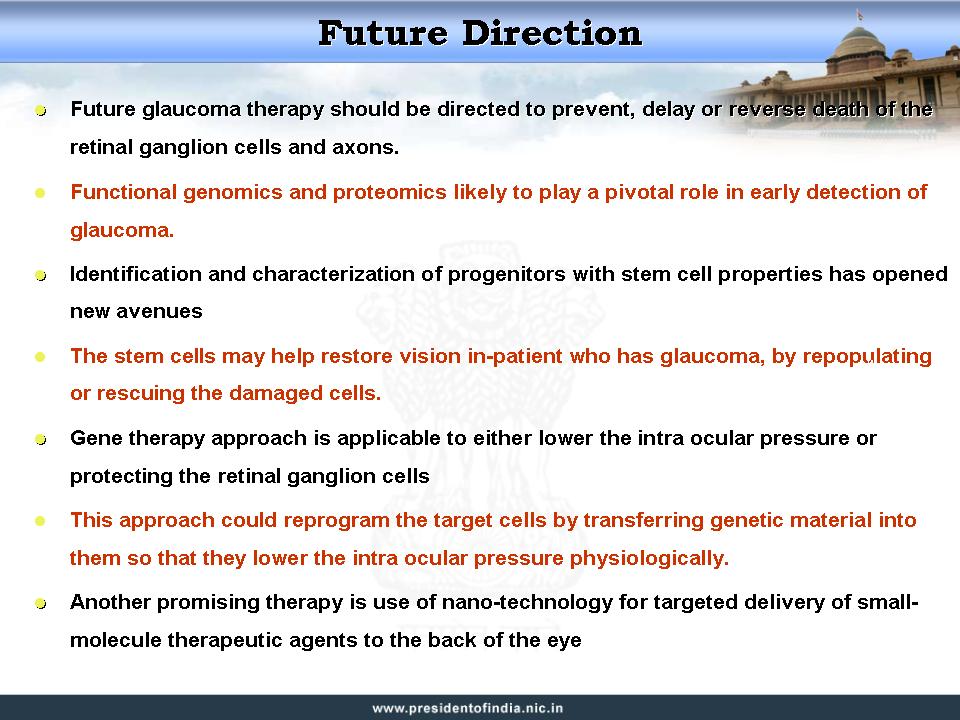

Research Area
Nano technology is finding large-scale application in drug delivery systems, biomedical application and nano structure and devices. The low dimensionality of many nano-structures, in which electrons are free to move in only two, one or even zero dimensions, has a profound effect on their chemical, electronic and optical properties. The practical application of these effects is only just beginning to be realized in such devices as lasers based on quantum wires and quantum dots. By exploiting quantum behavior, researchers can tailor the basic characteristics of the materials and devices to achieve greater efficiency, faster speeds and high packing density devices for electronic, photonic, catalytic, magnetic and biomedical applications. For example, a neural stimulatory micro-system requires fairly uniform nano-sized electrode arrays for focal stimulation of neural tissue for the treatment of blindness. Using nano-technology research, ophthalmologists can find innovative treatment methods for glaucoma. As you are aware, there are some leading research initiatives in the world, which give promising hope in the treatment of glaucoma, where convergence of technologies plays a major role: -
1. Applied nanotechnology aimed at the regeneration and neuroprotection of the central nervous system (CNS) will significantly benefit from basic nanotechnology research conducted in parallel with advances in related biological sciences. (Surgical Neurology 63 (2005) 301? 306)
2. Hamsters blinded following damage to their optic nerve have had their vision partially restored with the help of an implanted nanoscale scaffold that has encouraged nerve tissue to regrow. (The New Scientist 13 March 2006)
3. Optic nerve regeneration is the key to at least partially reverse blindness from glaucoma.
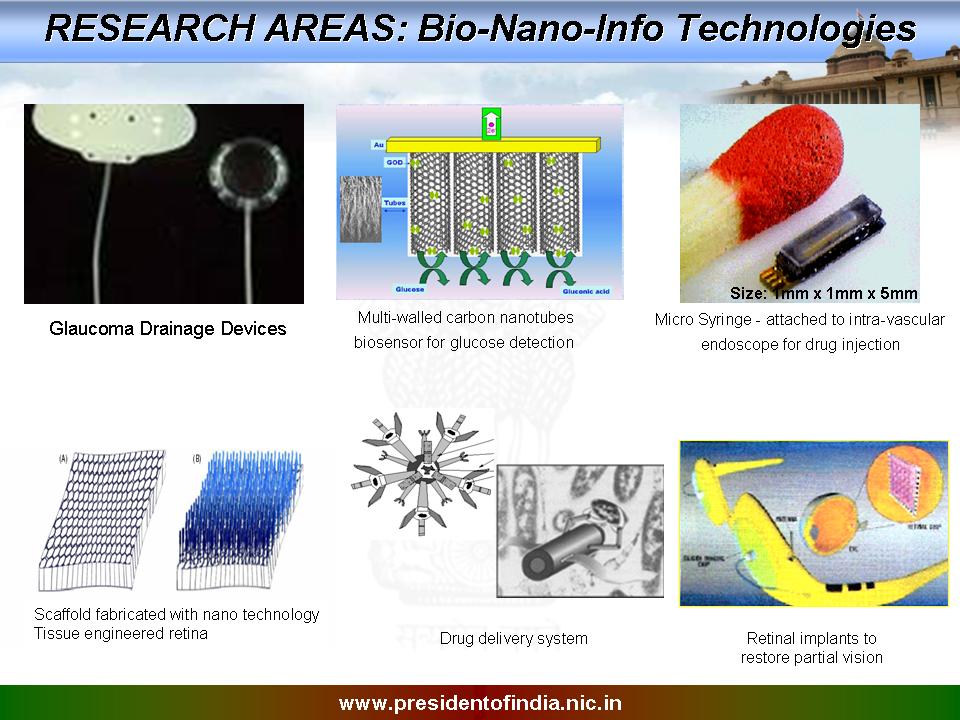

Approach Through Traditional Medicine
Approach through the traditional medicine route is another method to find a treatment regime for glaucoma. For example the extract of the leaves of the Chinese tree Ginkgo biloba, while Indians lay their hopes on Ashwagandha of Ayurveda for treatment of glaucoma. We need in depth work on these and similar approaches. I understand that research is going on to try and make a therapeutic vaccine against glaucoma. New innovative ideas of this kind should be encouraged in eye care centres in South East Asia.
Glaucoma is one area where we need an approach called bench to bedside, that is, basic research in the laboratory bench is needed in order to understand the problem, so that it can be translated as treatment to patients at their bedside. Scientists and ophthalmologists need to work hand in hand. I am happy that some of our eye care centres like Sankara Nethralaya, Aravind Eye Hospital and L.V. Prasad Eye Institute, are following this model.
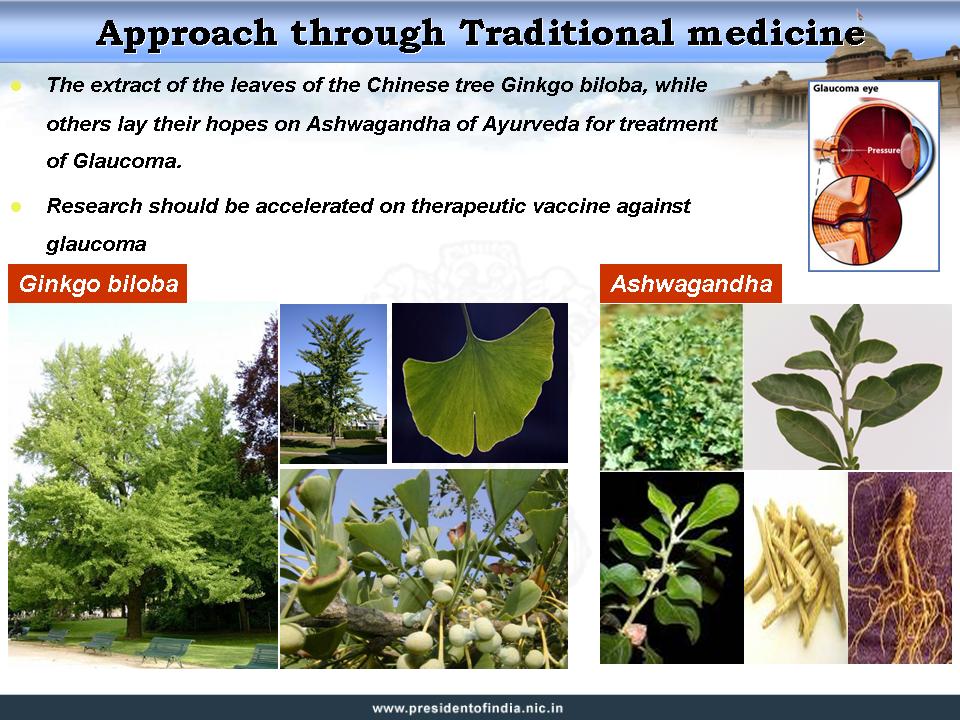

Ophthalmologists as Teachers
Recently, there was a meeting of cured patients, their doctors and a few social workers. One important result was discussed. The relationship between the patient and doctor extends to patients? families and doctors in medical care. This in turn, transmits effective messages from one family to another family on advice on how to prevent eye diseases, necessity of periodic checks, dietary habits and need for life style changes including eye exercise for good eye health. Actually, I believe this good contact between doctors and patients is comparable to that of a teacher and student. I request every doctor to play the role of a teacher in advising every family on eye disease prevention particularly glaucoma and methods to maintain a healthy vision. I hope you will find time for this noble action.
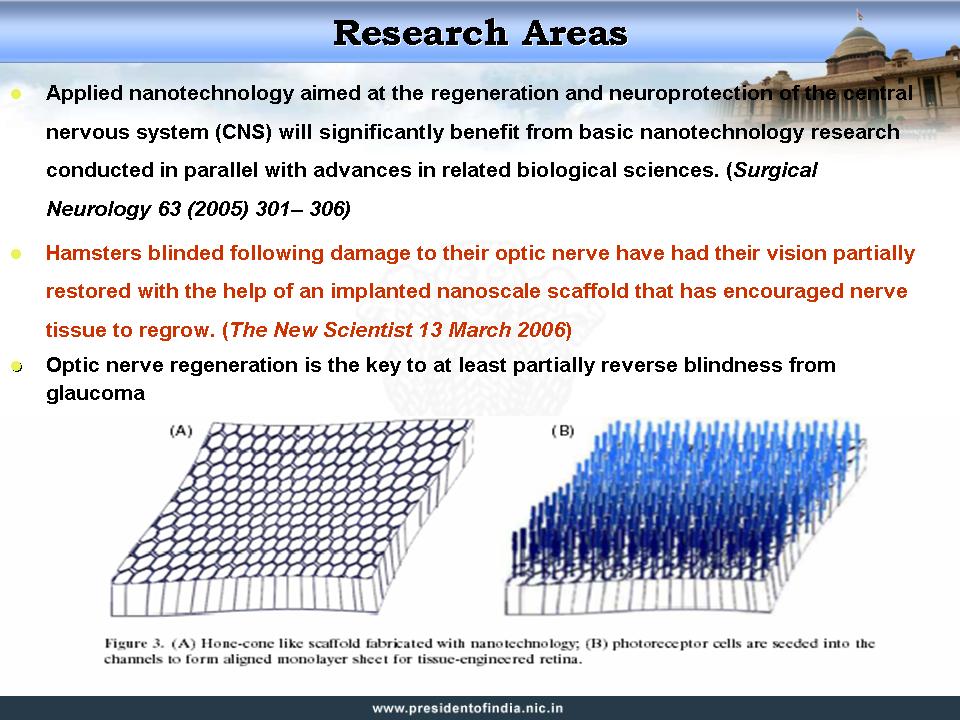

Conclusion
?Defect Free Vision For All? should be the mission of the South East Asia Glaucoma Interest Group. Eye problems of patients can be corrected, if diagnosed early. Since glaucoma occurs in the middle age group population, this conference may consider a methodology by which the population of this age group can be screened periodically through Eye Camps in their region. Any one detected with glaucoma should be treated by specialists at eye care hospitals in their region. This type of intervention will enable early detection and cure of glaucoma prevalent among the middle age group resulting in better productivity from this group.
Emerging virtual reality and micro machines and convergence of technologies will transform the healthcare scenario. We also have amongst us today, the best doctors in eye care from around the world. I suggest that all of you join together and say, ?Let there be no glaucoma? and I am sure the world will become a much more lighted place and brighter.
For screening of rural people in South East Asia, I recommend deployment of mobile clinics by eye specialists in Ophthalmology present in this Conference. This will be an important contribution by this interest group in preventing and treating glaucoma in particular and eye care in general. One of the great qualities of human beings as envisioned by Almighty is to give and give. What any one of us can give who is blessed with eye vision. When I see all of you professionals of the South East Asia Glaucoma Interest Group, I find God has blessed you all with the ability and mind to give vision to thousands and thousands of our fellow citizens.
With these words, I inaugurate the South East Asia Glaucoma Interest Group Conference. My best wishes to all the participants at this Conference in their mission of making the region glaucoma free.
May God bless you.
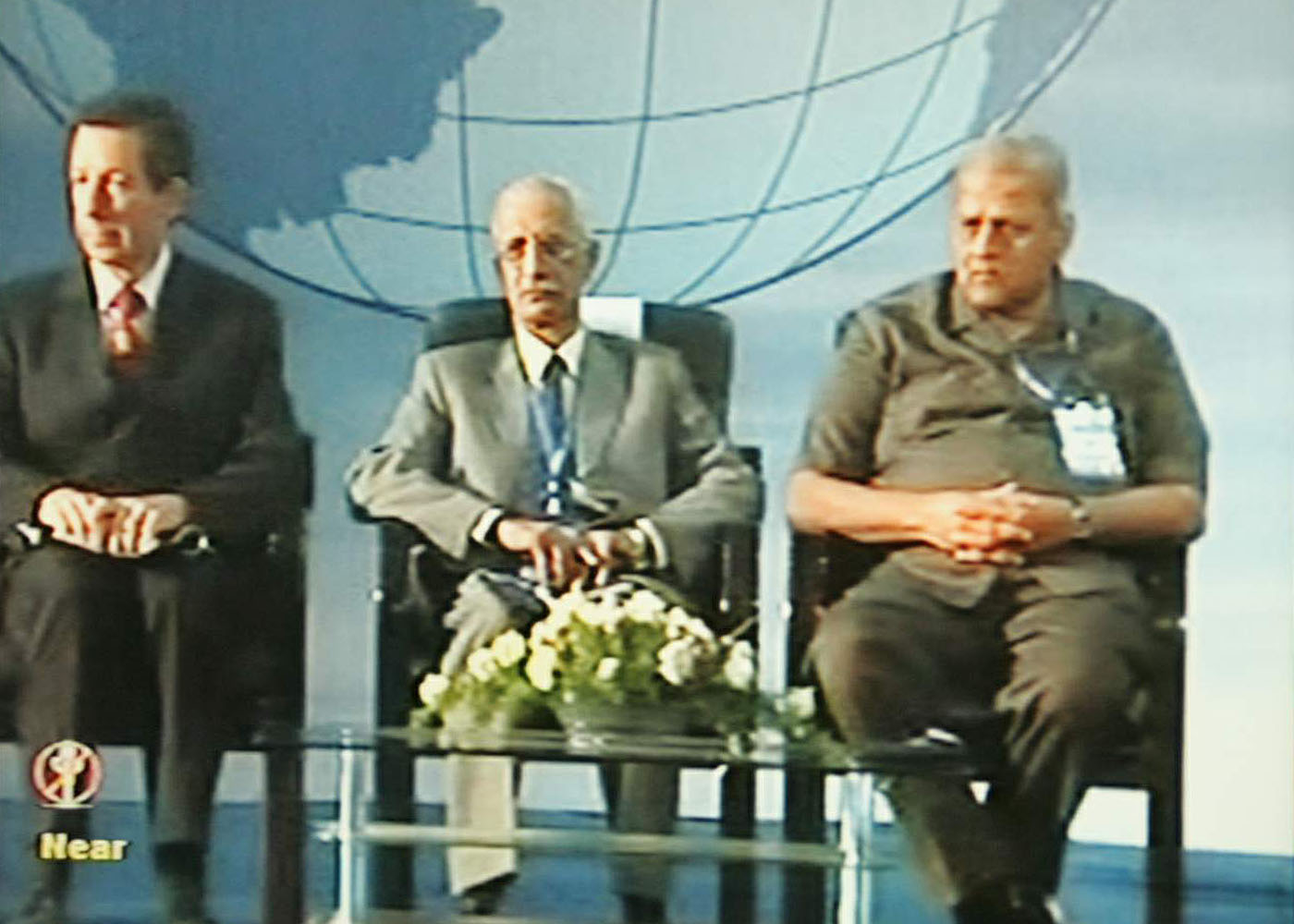
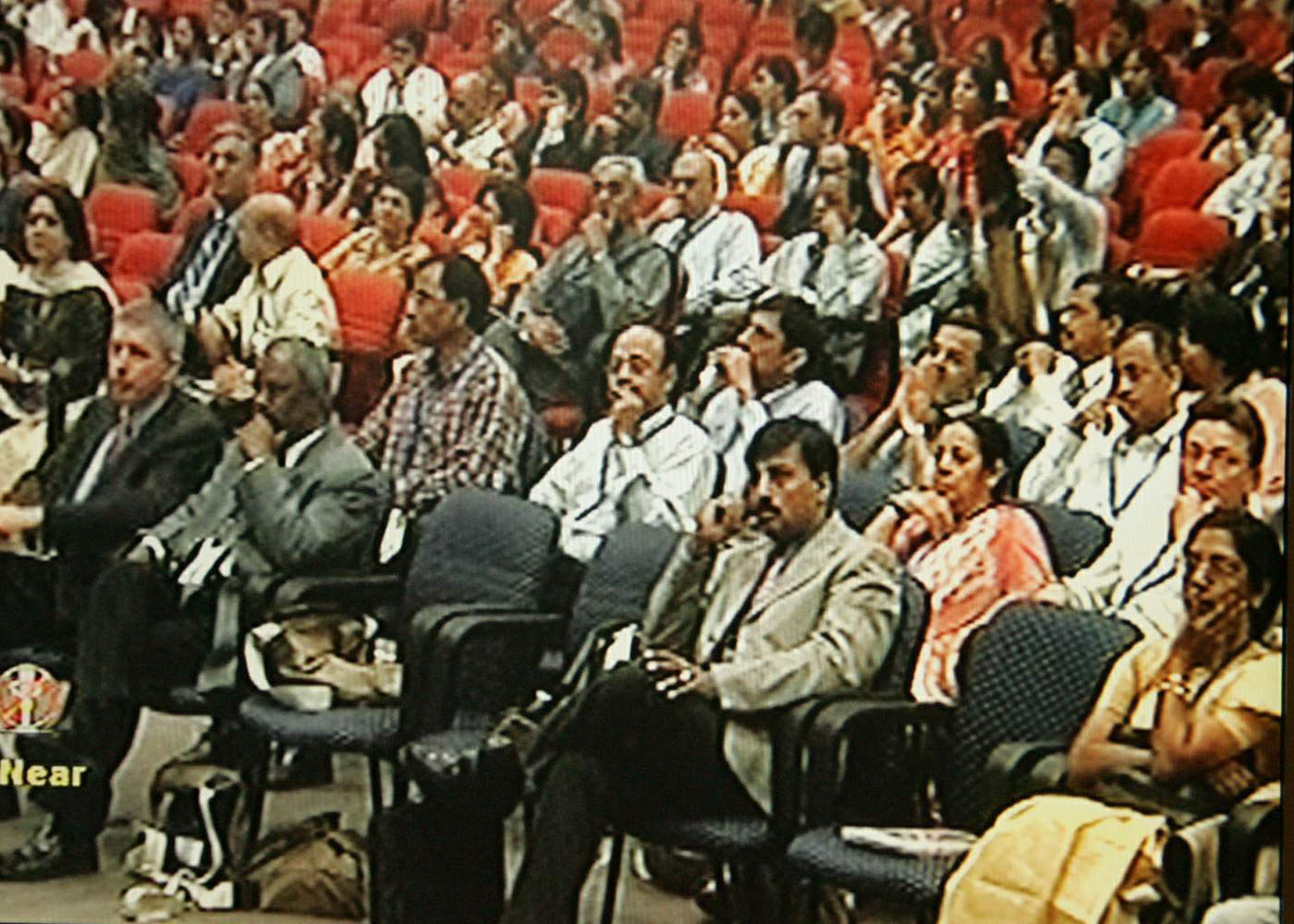
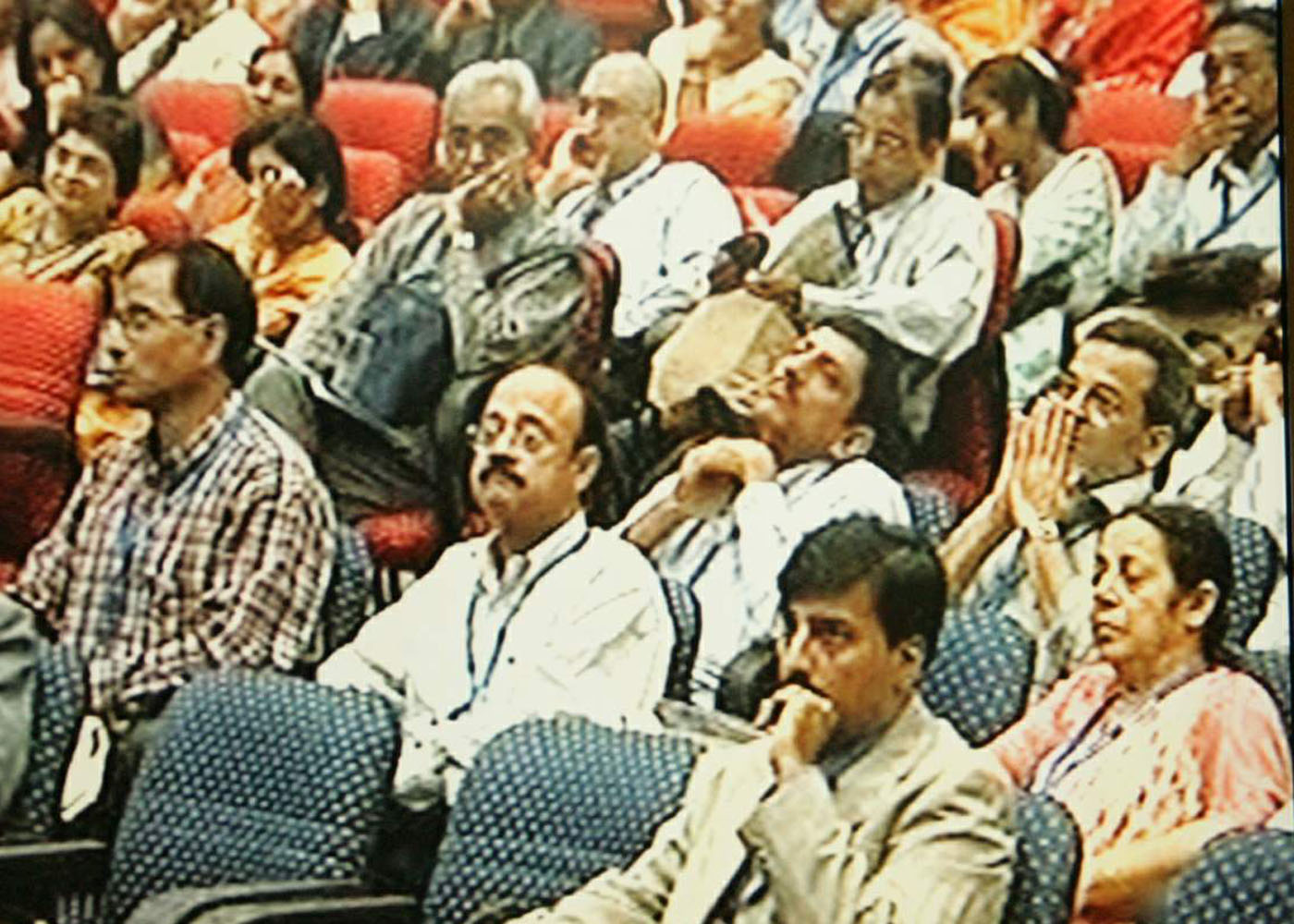
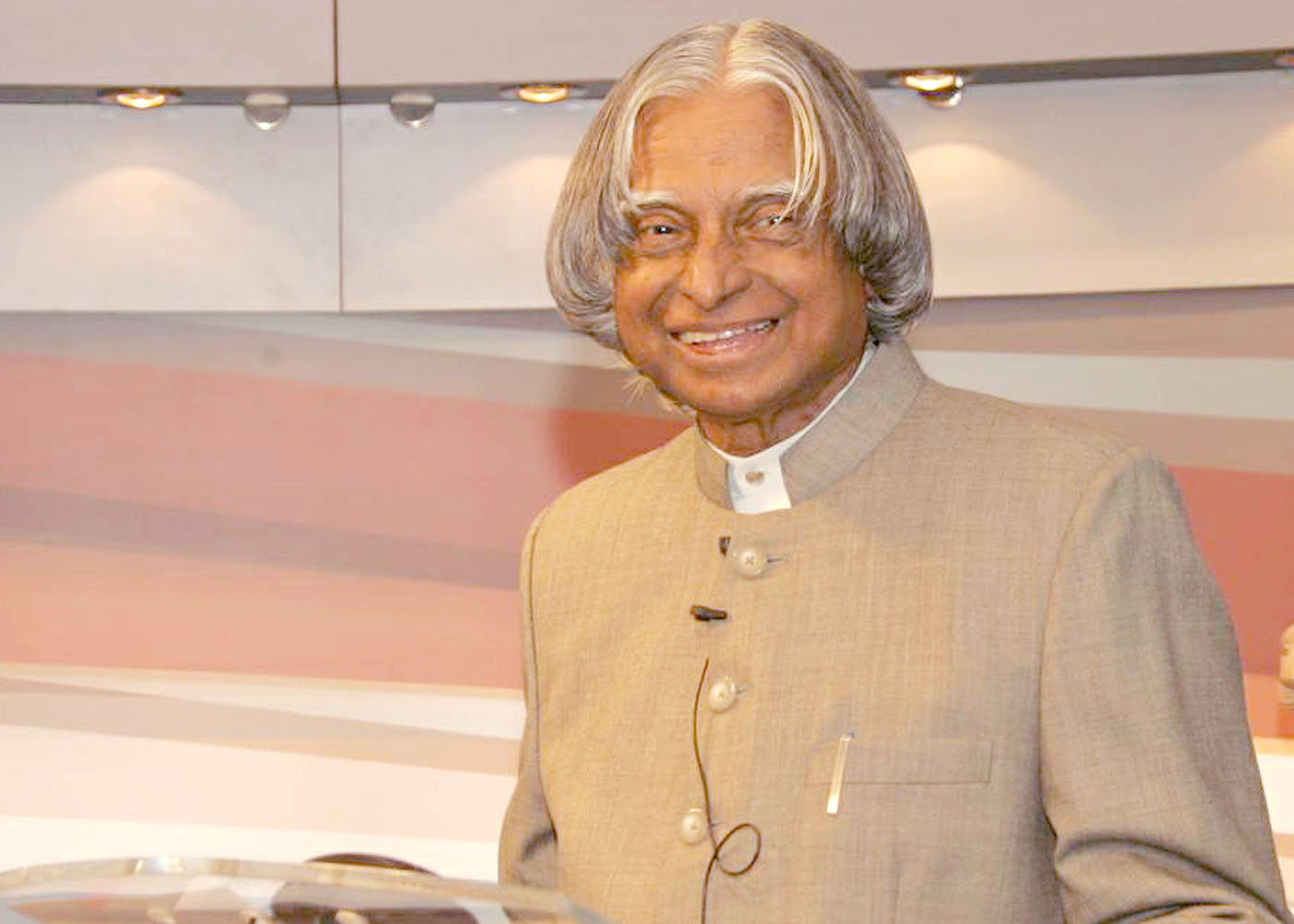
<<Back
|